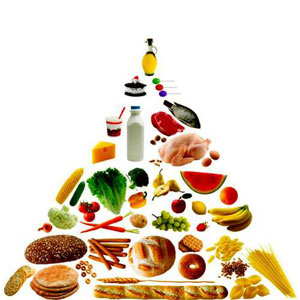Scientific Resources

Nutrients
There are six major classes of nutrients: carbohydrates, fats, minerals, protein, vitamins, and water. These nutrient classes can be categorized as either macronutrients (needed in relatively large amounts) or micronutrients (needed in smaller quantities). The macronutrients include carbohydrates (including fiber), fats, protein, and water. The micronutrients are minerals and vitamins.The macronutrients provide structural material (amino acids from which proteins are built, and lipids from which cell membranes and some signaling molecules are built) and energy. Some of the structural material can be used to generate energy internally. Carbohydrates and proteins provide 17 kJ approximately (4 kcal) of energy per gram, while fats provide 37 kJ (9 kcal) per gram. Vitamins, minerals, fiber, and water do not provide energy, but are required for other reasons.
Molecules of carbohydrates and fats consist of carbon, hydrogen, and oxygen atoms. Carbohydrates range from simple monosaccharaides (glucose, fructose, galactose) to complex polysaccharides (starch). Fats are triglycerides, made of assorted fatty acid monomers bound to glycerol backbone. Some fatty acids, but not all, are essential in the diet: they cannot be synthesized in the body. Protein molecules contain nitrogen atoms in addition to carbon, oxygen, and hydrogen. The fundamental components of protein are nitrogen-containing amino acids, some of which are essential in the sense that humans cannot make them internally. Some of the amino acids are convertible to glucose and can be used for energy production just as ordinary glucose in a process known as gluconeogenesis. By breaking down existing protein, some glucose can be produced internally; the remaining amino acids are discarded, primarily as urea in urine. This occurs normally only during prolonged starvation.
Other micronutrients include antioxidants and phytochemicals, which are said to influence (or protect) some body systems. Their necessity is not as well established as in the case of, for instance, vitamins.
Most foods contain a mix of some or all of the nutrient classes, together with other substances, such as toxins of various sorts. Some nutrients can be stored internally (e.g., the fat soluble vitamins), while others are required more or less continuously. Poor health can be caused by a lack of required nutrients or, in extreme cases, too much of a required nutrient.
Ref: Wikipedia

